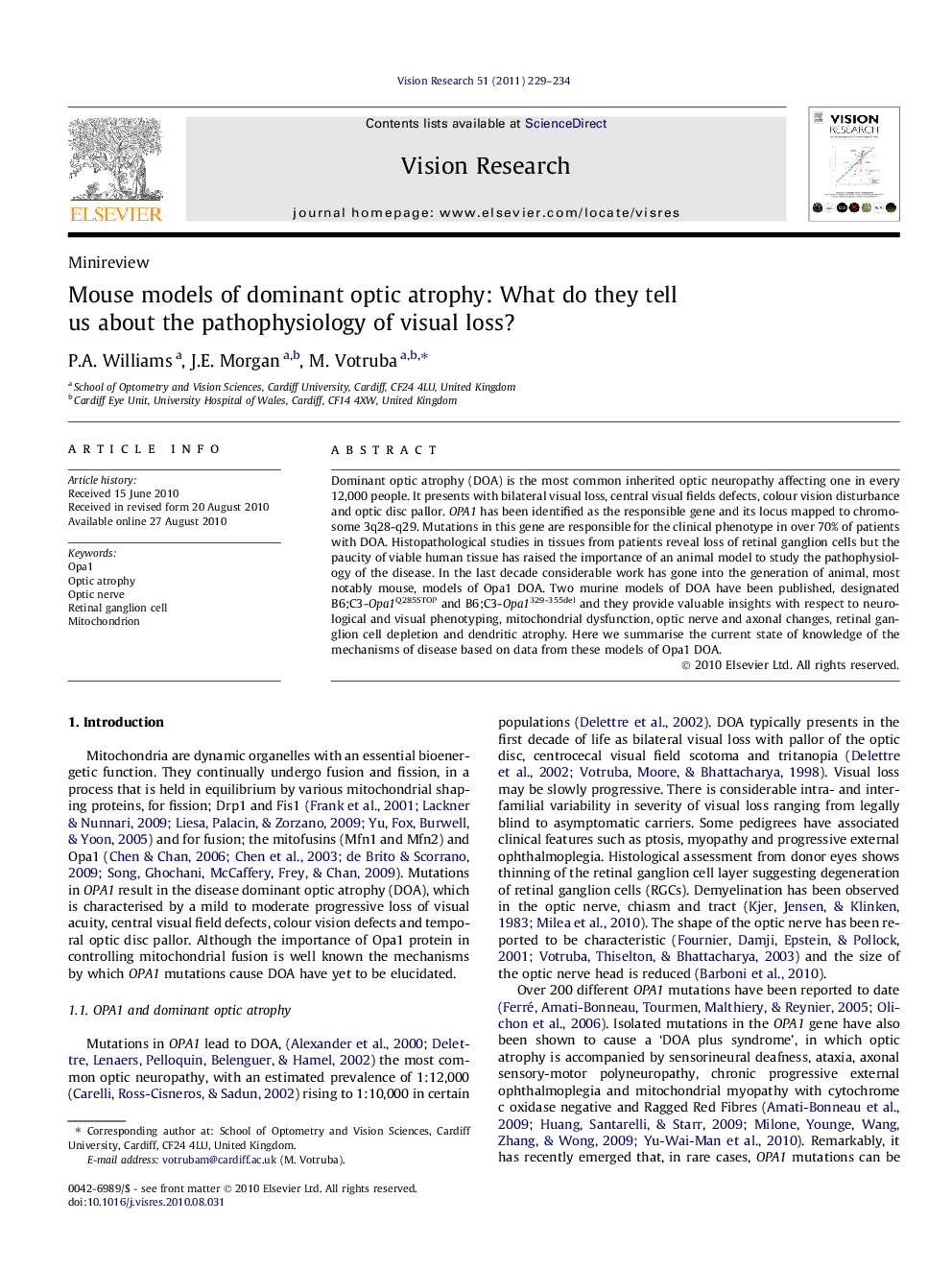| کد مقاله | کد نشریه | سال انتشار | مقاله انگلیسی | نسخه تمام متن |
|---|---|---|---|---|
| 4034318 | 1263447 | 2011 | 6 صفحه PDF | دانلود رایگان |

Dominant optic atrophy (DOA) is the most common inherited optic neuropathy affecting one in every 12,000 people. It presents with bilateral visual loss, central visual fields defects, colour vision disturbance and optic disc pallor. OPA1 has been identified as the responsible gene and its locus mapped to chromosome 3q28-q29. Mutations in this gene are responsible for the clinical phenotype in over 70% of patients with DOA. Histopathological studies in tissues from patients reveal loss of retinal ganglion cells but the paucity of viable human tissue has raised the importance of an animal model to study the pathophysiology of the disease. In the last decade considerable work has gone into the generation of animal, most notably mouse, models of Opa1 DOA. Two murine models of DOA have been published, designated B6;C3-Opa1Q285STOP and B6;C3-Opa1329-355del and they provide valuable insights with respect to neurological and visual phenotyping, mitochondrial dysfunction, optic nerve and axonal changes, retinal ganglion cell depletion and dendritic atrophy. Here we summarise the current state of knowledge of the mechanisms of disease based on data from these models of Opa1 DOA.
Research highlights
► Dominant optic atrophy is the most common inherited optic neuropathy.
► Mutations in the OPA1 gene give rise to the majority of cases.
► Two murine models of DOA exist: B6;C3-Opa1Q285STOP and B6;C3-Opa1329-355del.
► They provide valuable insights into the pathophysiology of visual loss.
Journal: Vision Research - Volume 51, Issue 2, 28 January 2011, Pages 229–234